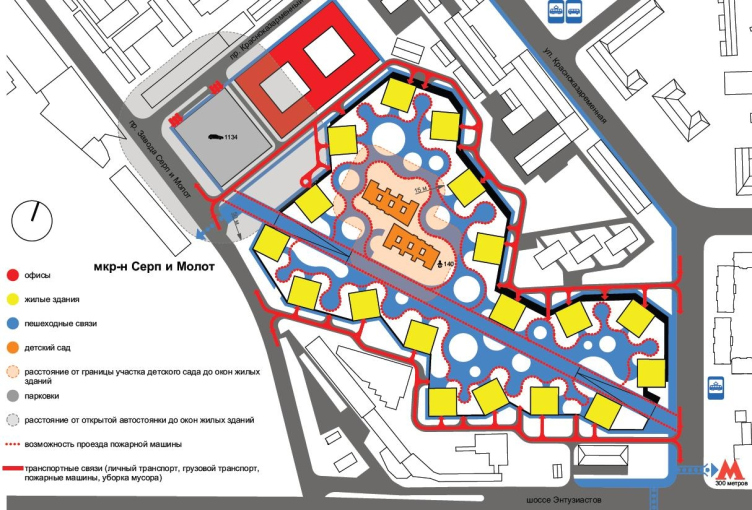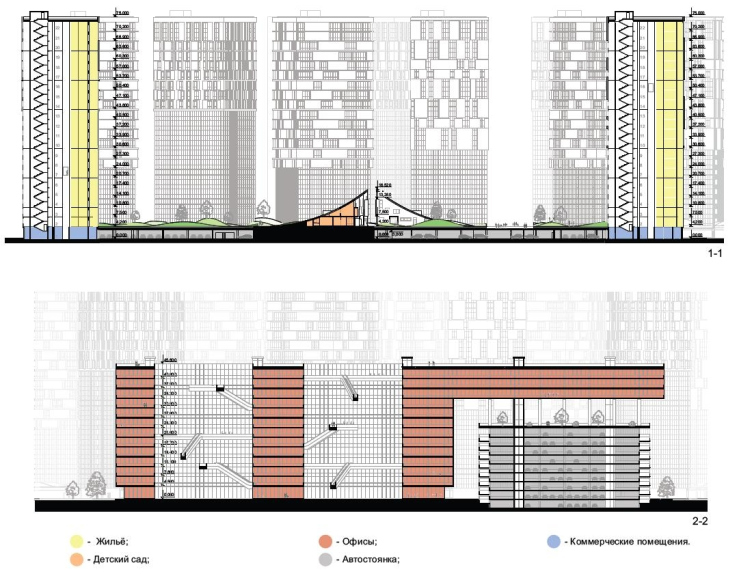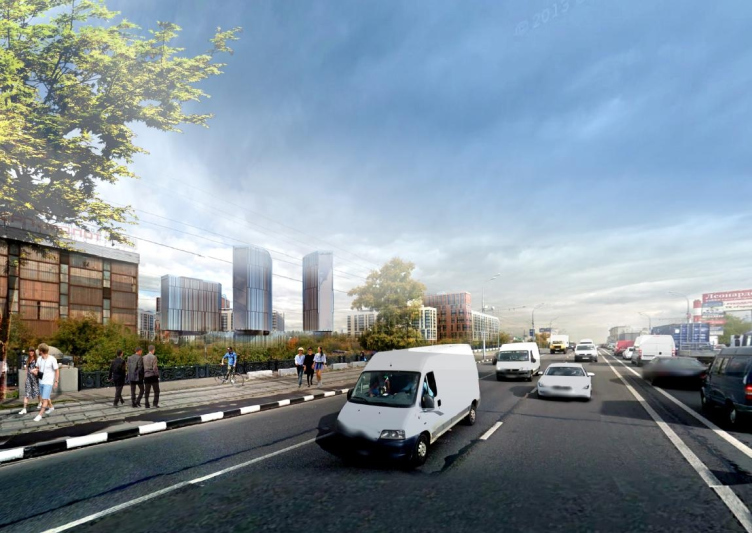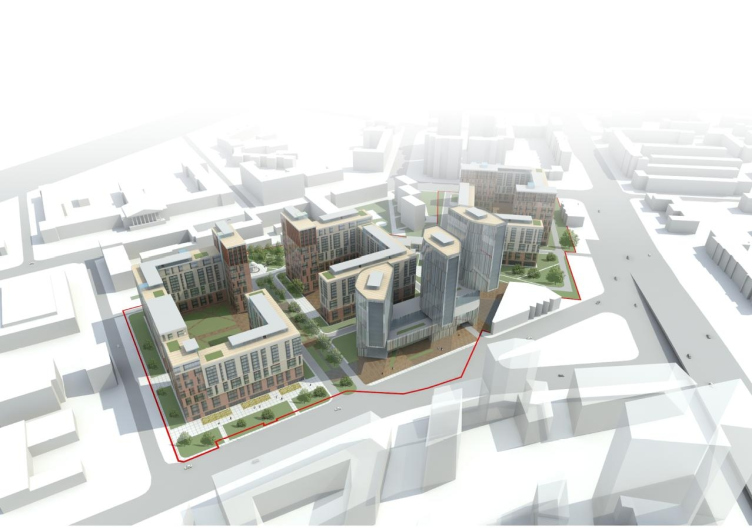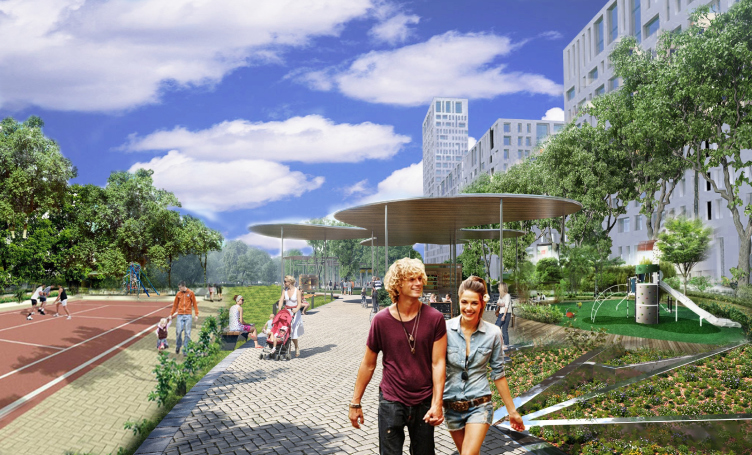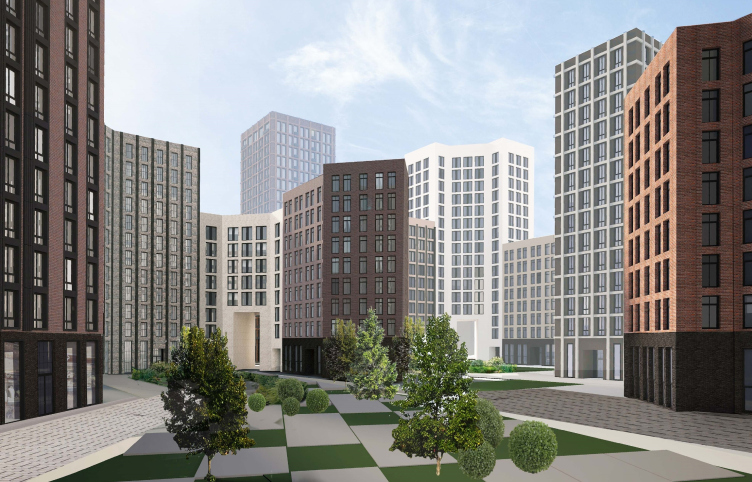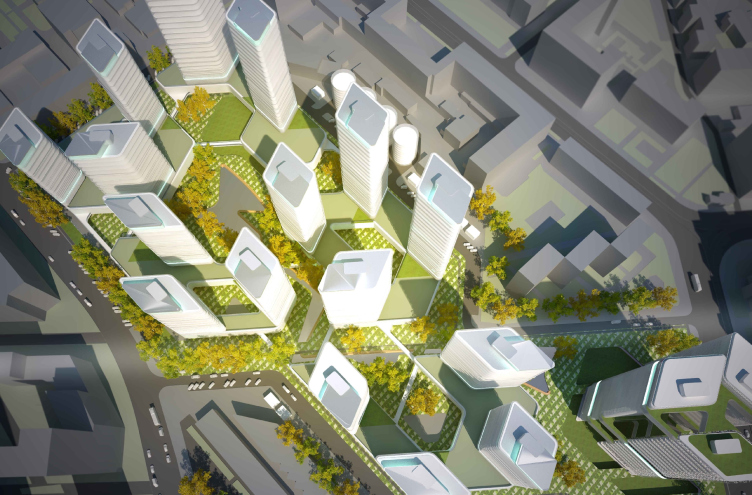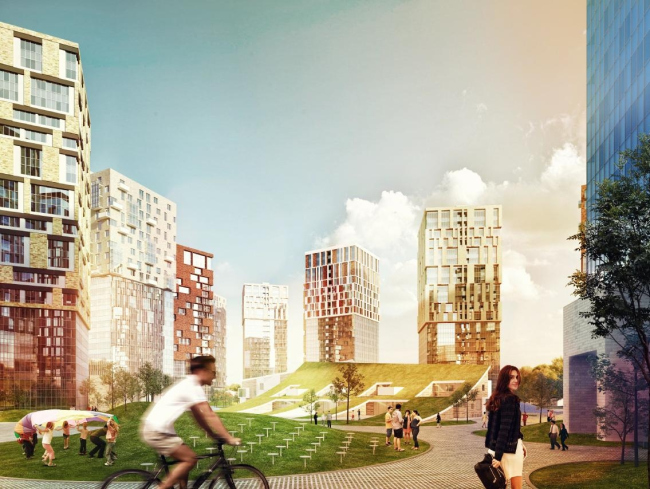
"Suprematism" project by "8D architects". Photo courtesy by the contest organizers
The land site that is now surrounded with fences and sheds, and overall looks semi-industrial, (although, according to Yandex Maps, not considered as an industrial area) is planned to be completely rebuilt. Nine hectares will be built over with 20 hectares of dwelling space for about 4570 people, a three-story kindergarten, 10 hectares of offices, and over a hectare of ground floor will be allocated for a number of cafes and shops. The maximum building height is 246 feet, the allowable number of floors ranging from 14 to 21. The competition was organized by the Union of Moscow Architects and the Regional Center of Urban Geography for “MORTON” development center. 31 projects took part in the contest, two of which shared the winning entries and eight more were shortlisted. All the ten finalists are published in this article.
The Winner.
“Supermatism”/8D architects
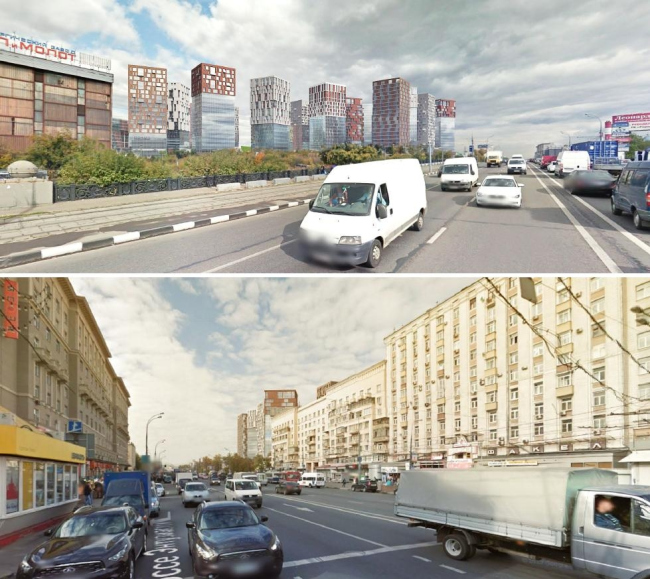
"Suprematism" project by "8D architects". Photo courtesy by the contest organizers
The base of the project is a pedestrian boulevard – a diagonal axis connecting “Hammer and Sickle” factory and Shosse Entuziastov metro station; from north-east to south-west. The architects placed 18 residential towers along the perimeter of the territory, square on plan and with varying facades. The lower parts of the houses, all of different height, are made of glass. The upper parts are covered with thicker matter. This creates an allusion to stone volumes, levitating on a different distance from the ground. Following the fanciful outline of the plot the towers are turned at different angles which makes an impression of a dance (it also somehow reminds Erick Egeraat’s residential complex “Avant-guard”). The apartments vary from one-room studios to penthouses with terraces. The office complex and the parking lot are stretched along the upper part of the site – Krasnokazarnenniy Drive.
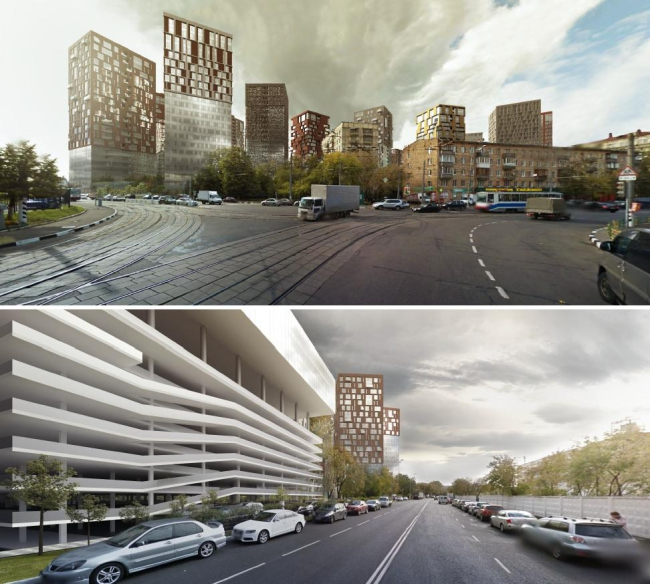
"Suprematism" project by "8D architects". Photo courtesy by the contest organizers
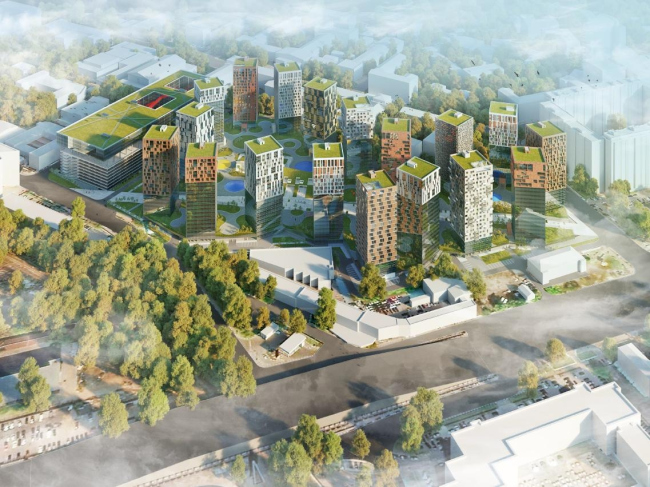
"Suprematism" project by "8D architects". Photo courtesy by the contest organizers
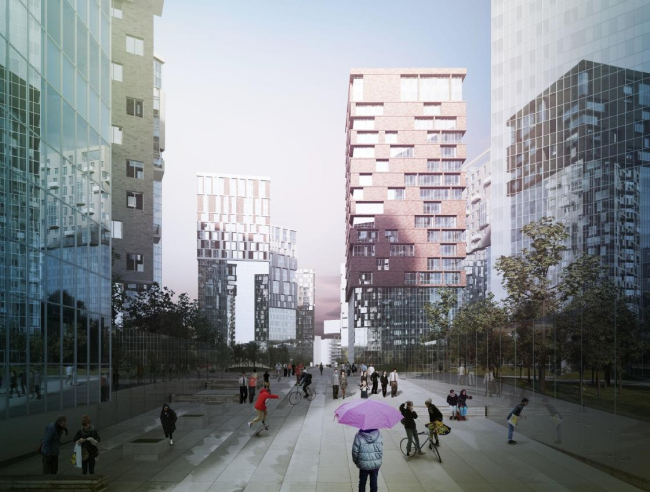
"Suprematism" project by "8D architects". Photo courtesy by the contest organizers
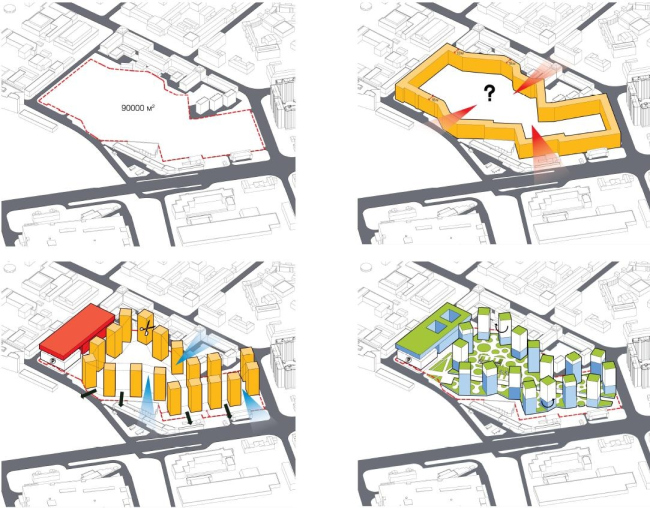
"Suprematism" project by "8D architects". Photo courtesy by the contest organizers
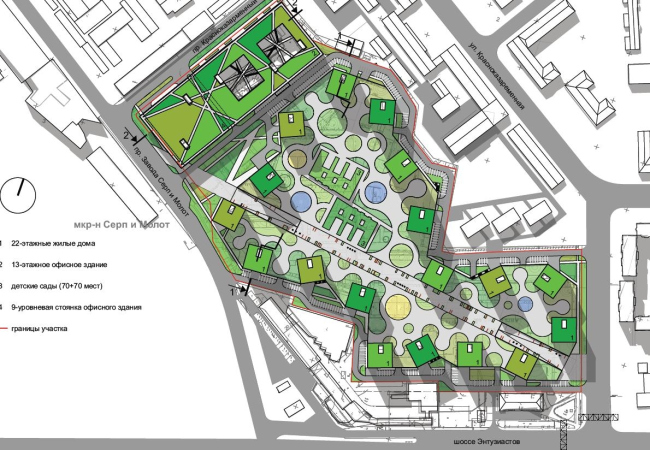
"Suprematism" project by "8D architects". Photo courtesy by the contest organizers

"Suprematism" project by "8D architects". Photo courtesy by the contest organizers
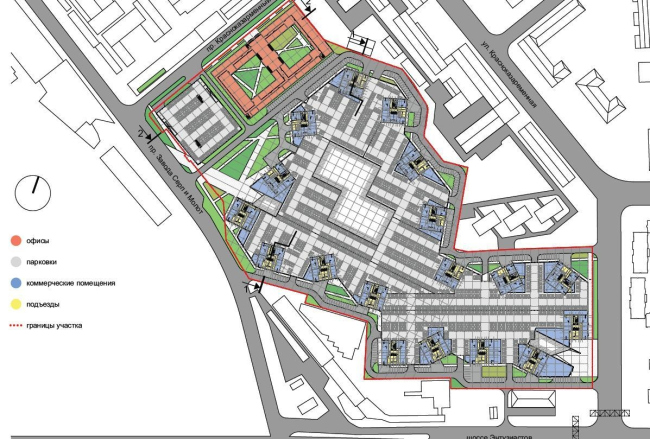
"Suprematism" project by "8D architects". Photo courtesy by the contest organizers
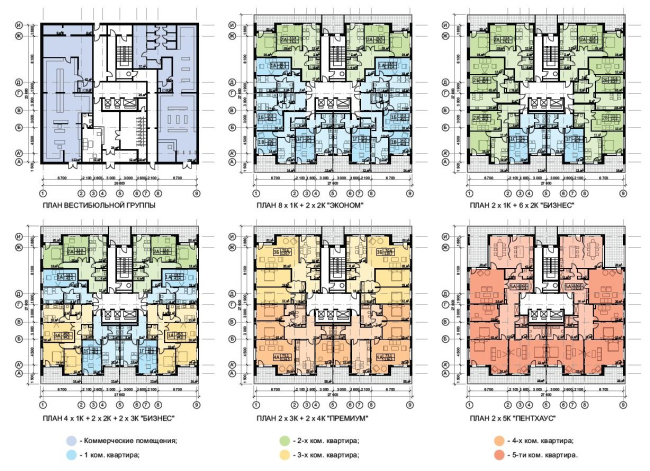
"Suprematism" project by "8D architects". Photo courtesy by the contest organizers

"Suprematism" project by "8D architects". Photo courtesy by the contest organizers
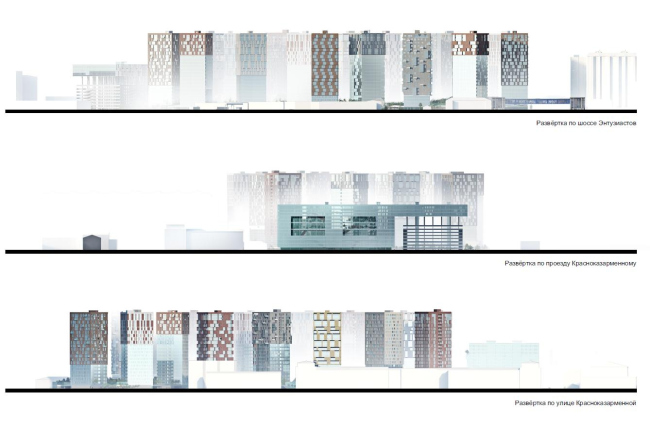
"Suprematism" project by "8D architects". Photo courtesy by the contest organizers
Second Prize
“Annenhof Park” / Asadov Architectural Bureau
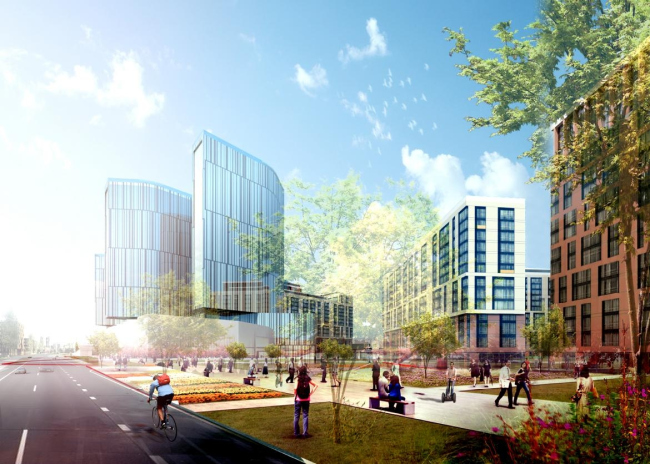
Annenhof Park. Asadov Architectural Bureau. Photo courtesy by the contest organizers
The suggested name of the architectural complex – “Annenhof Park” – reflects the history of the area. This territory neighbored upon the former Annenhof Grove back in the 18th century. And, even though hardly anything is left of it today, some fragments of the grove have been preserved as public gardens. The biggest of them is situated in front of the Military Armored Forces Academy (former Catherine’s Palace) which is about 0,6 miles away from the plot. Lefortovo Park, the remainder of Annenhof on the bank of the Yauza River (also the former park at Golovin Palace, later Catherine’s Palace), is 1,2 miles away from the residential complex. The architects see these green parks as recreational areas for the future dwellers.
The building complex consists of four groups of buildings in this project: one allocated for the offices and three for dwelling. The office-building looks like a crystal: three polyhedral towers arranged at different angles are united by a single stylobate and are connected to the central spatial axis of the future territory of “Hammer and Sickle” complex.
The three groups of apartment houses with different numbers of floors are built up as blocks around the perimeter of the yards. Two basements and a ground floor are allocated for parking lots. That’s why the surfaces of the yards are raised higher up than the adjacent territories, which restricts the access of transport. The green parks and boulevards inside the dwelling complex, as well as the adjacent kindergarten and a number of shops, are separated from the traffic area.

Annenhof Park. Asadov Architectural Bureau. Photo courtesy by the contest organizers
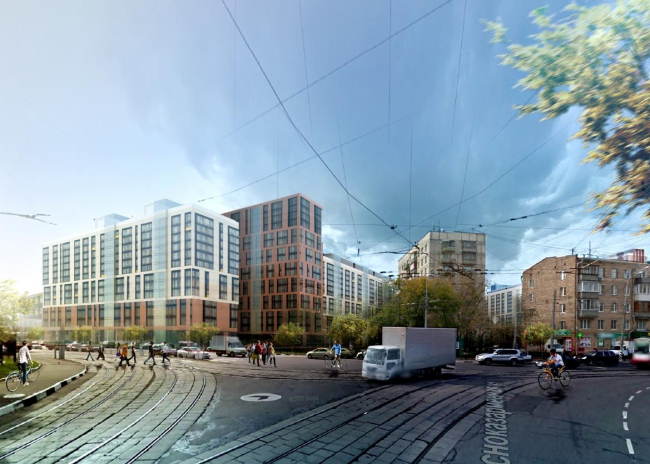
Annenhof Park. Asadov Architectural Bureau. Photo courtesy by the contest organizers
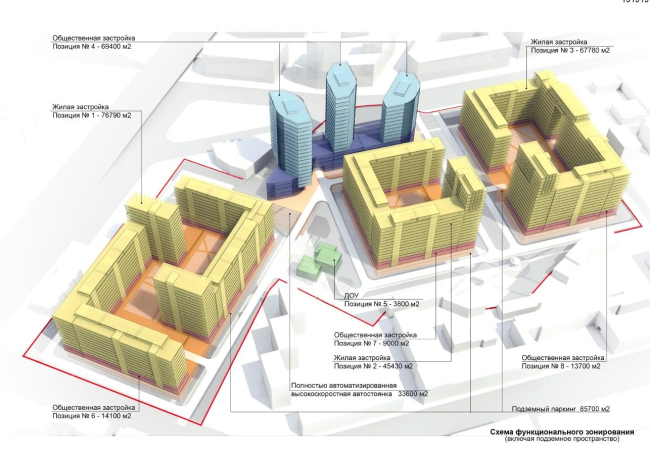
Annenhof Park. Asadov Architectural Bureau. Photo courtesy by the contest organizers

Annenhof Park. Asadov Architectural Bureau. Photo courtesy by the contest organizers
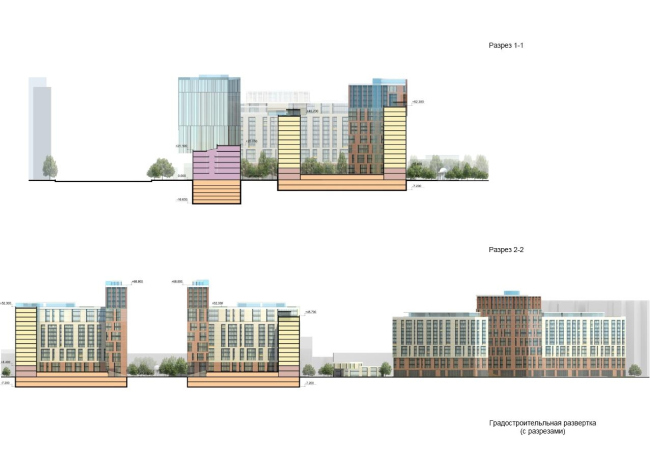
Annenhof Park. Asadov Architectural Bureau. Photo courtesy by the contest organizers
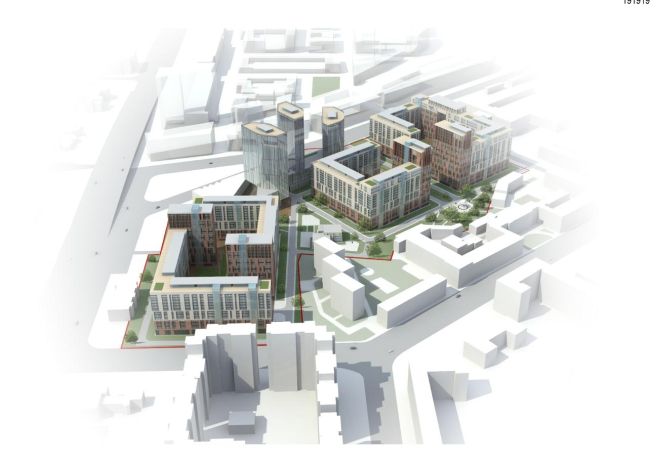
Annenhof Park. Asadov Architectural Bureau. Photo courtesy by the contest organizers

Annenhof Park. Asadov Architectural Bureau. Photo courtesy by the contest organizers
***
The Projects in the Shortlist
According to the terms of the competition, the eight candidates that have gotten into the shortlist may take part in the coming creative contests and projects of MORTON Group and the Regional Center of Urban Geography.
Vladimir Kuzmin, Ekaterina Shornikova, Alisa Mamayeva.

Proposal for building over a land site in the South-East Administrative District of Moscow. Vladimir Kuzmin, Ekaterina Shornik, Alice Mamaeva. Photo courtesy by the contest organizers
The residential houses are inserted into four secluded blocks of a rigid orthogonal layout, separated by green boulevards. The office-buildings of the same orthogonal planning are situated closer to Entuziastov Highway and are turned at 45 degrees to the residential quarter these are meant to block the noise of the highway. At the same time the offices are separated from the dwellings by a green area. Tall beacon-towers at the corners of the buildings visually unite them.
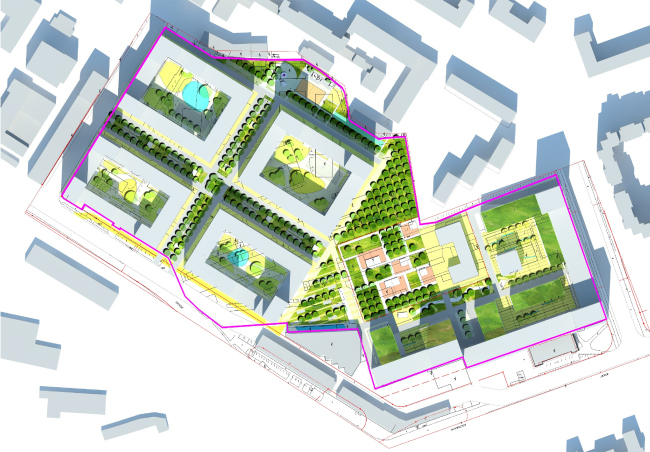
Proposal for building over a land site in the South-East Administrative District of Moscow. Vladimir Kuzmin, Ekaterina Shornik, Alice Mamaeva. Photo courtesy by the contest organizers
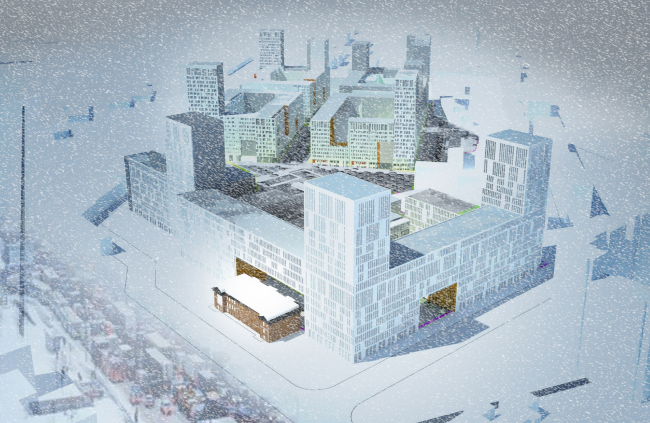
Proposal for building over a land site in the South-East Administrative District of Moscow. Vladimir Kuzmin, Ekaterina Shornik, Alice Mamaeva. Photo courtesy by the contest organizers
***
“Archimedes PLUS”
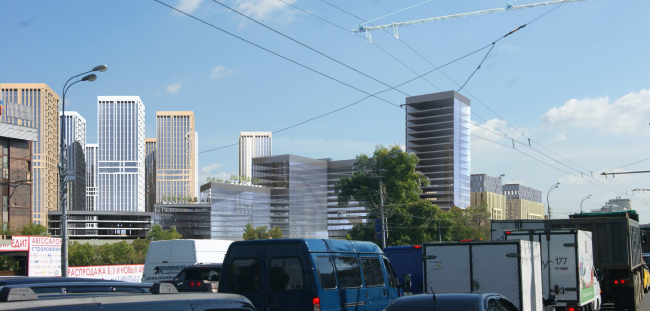
Proposal for building over a land site in the South-East Administrative District of Moscow. "Archimedes Plus". Photo courtesy by the contest organizers
The project suggests three isolated areas. There are extensive sectional residential buildings on the sides of Krasnokazarmenniy drive and “Hammer and Sickle” drive. They hide the seemingly randomly arranged tower houses at the back of the district. An impressively large building adjoins Entuziastov highway and Aviamotorniy drive. Its layout and the facades remind the neighboring Moscow Power Engineering Institute. The third area is seven-, twelve- and twenty-storey Business Center of a rather reserved form and with pristene glazed façades.
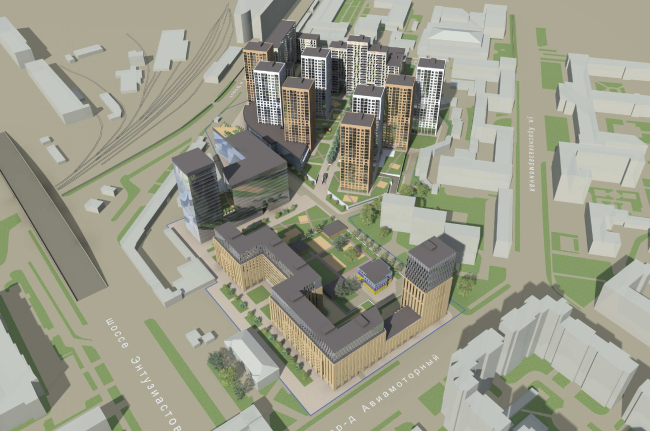
Proposal for building over a land site in the South-East Administrative District of Moscow. "Archimedes Plus". Photo courtesy by the contest organizers
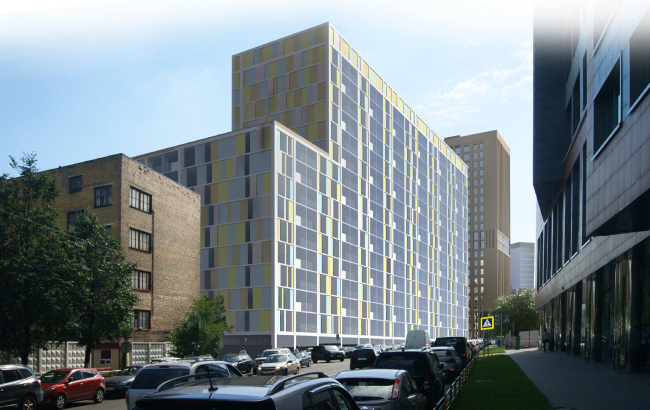
Proposal for building over a land site in the South-East Administrative District of Moscow. "Archimedes Plus". Photo courtesy by the contest organizers
***
Robert Podjapolsky, Alexander Shabanov

Proposal for building over a land site in the South-East Administrative District of Moscow. Robert Podjapolsky, Alexander Shabanov. Photo courtesy by the contest organizers
The district sooner reminds a natural park with its outlines formed by the surrounding houses in this project. The houses – several square towers, a zigzag, books and plates – protect the park between them. The authors suggest the dwellings and offices be mixed in order to stimulate the movement about the central green area and “integrate nature into the everyday life of the townspeople”.
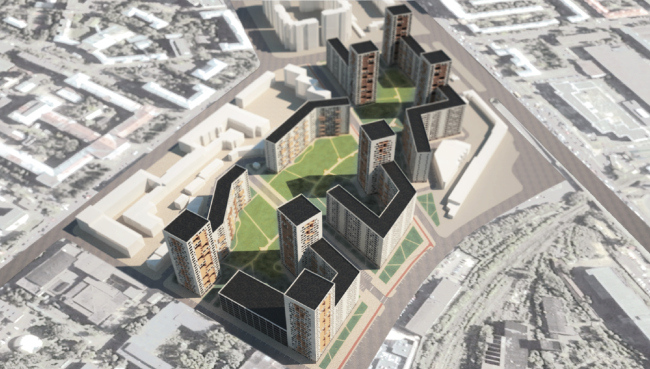
Proposal for building over a land site in the South-East Administrative District of Moscow. Robert Podjapolsky, Alexander Shabanov. Photo courtesy by the contest organizers
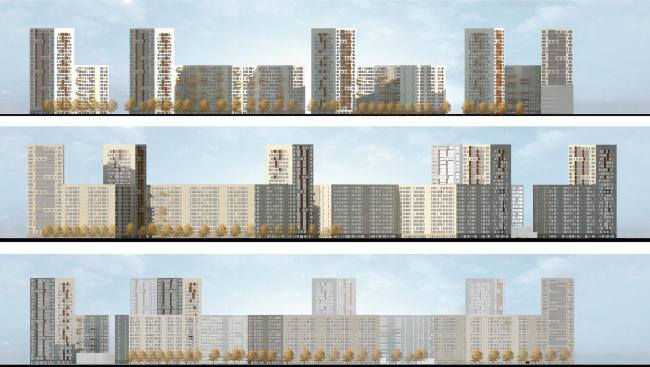
Proposal for building over a land site in the South-East Administrative District of Moscow. Robert Podjapolsky, Alexander Shabanov. Photo courtesy by the contest organizers
***
Vadim Lukin, Oleg Ryzhayev
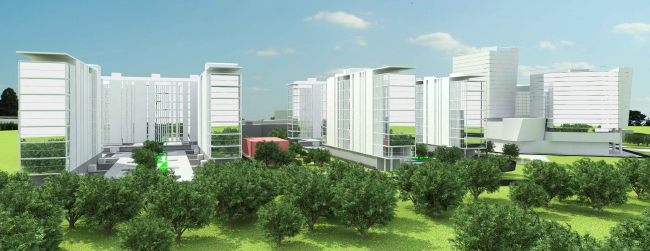
Proposal for building over a land site in the South-East Administrative District of Moscow. Vadim Lukin, Oleg Ryzhaev. Photo courtesy by the contest organizers
The authors propose a strict functional zoning but, at the same time, preserving the general stylistic concept. The buildings remind the slightly lifted houses of Le Corbusier with support-pillars and roof gardens.
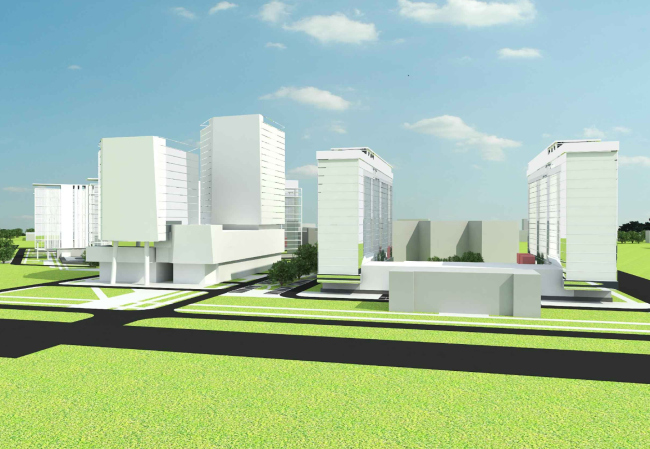
Proposal for building over a land site in the South-East Administrative District of Moscow. Vadim Lukin, Oleg Ryzhaev. Photo courtesy by the contest organizers
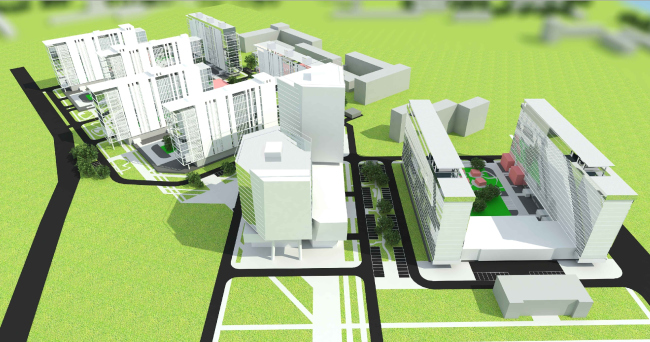
Proposal for building over a land site in the South-East Administrative District of Moscow. Vadim Lukin, Oleg Ryzhaev. Photo courtesy by the contest organizers
***
Konstantin Konovaltsev, Oleg Konovaltsev, Olga Tishenko
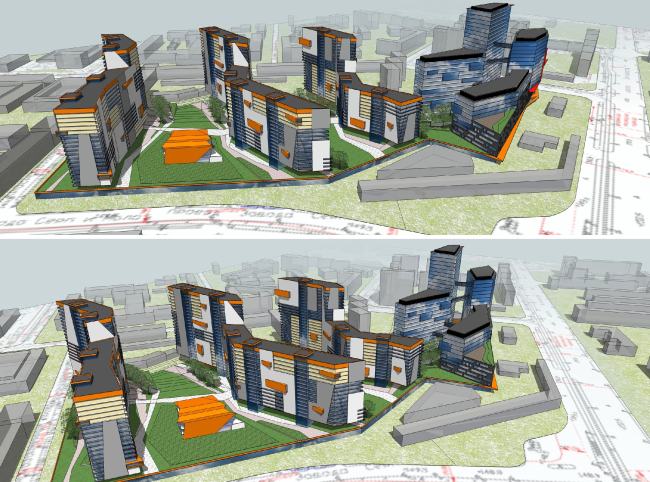
Proposal for building over a land site in the South-East Administrative District of Moscow. Konstantin Konovaltsev, Oleg Konovaltsev, Olga Tishenko. Photo courtesy by the contest organizers
The “main characters” in this project are angles. The architects bring out the visual perception of different combinations of acute and obtuse angles to the foreground, both in the plan and in the facades and geometrical outlines of the green areas. The coloring of the fronts makes an interesting contribution to the whole impression: the facades are as if composed of gigantic deformed Tetris pieces.
The office-buildings stand aside from the dwelling houses and are supposed to keep the highway sounds from disturbing the dwellers. The apartment-houses, on the contrary, are planned at the back of the lot, and are arranged so that the yards and north-facades stay insolated.
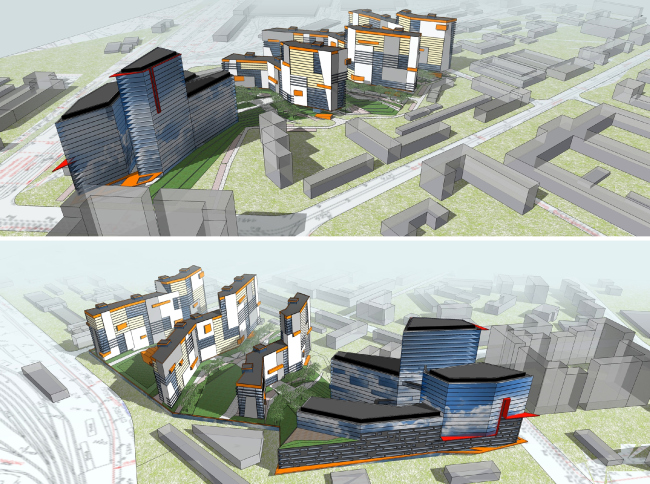
Proposal for building over a land site in the South-East Administrative District of Moscow. Konstantin Konovaltsev, Oleg Konovaltsev, Olga Tishenko. Photo courtesy by the contest organizers
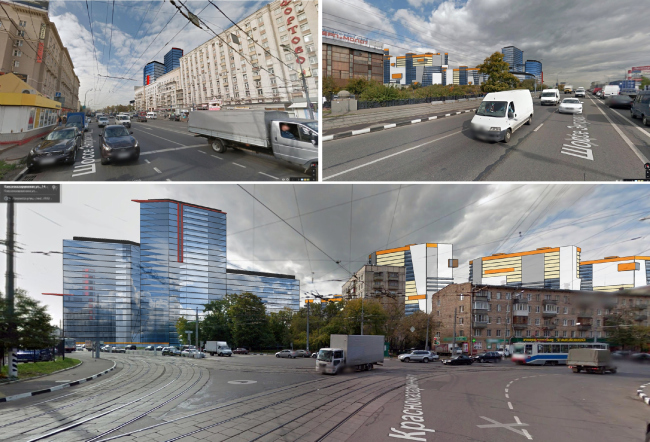
Proposal for building over a land site in the South-East Administrative District of Moscow. Konstantin Konovaltsev, Oleg Konovaltsev, Olga Tishenko. Photo courtesy by the contest organizers
***
Elena Popova, Vera Betretdinova, Olga Mranova
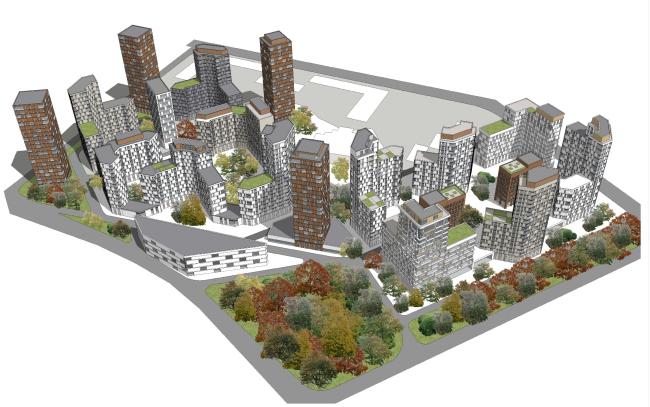
Proposal for building over a land site in the South-East Administrative District of Moscow. Elena Popova, Vera Betretdinova, Olga Mranova. Photo courtesy by the contest organizers
The concept proposes rather densely arranged houses of a different number of stories with several dominating towers.

Proposal for building over a land site in the South-East Administrative District of Moscow. Elena Popova, Vera Betretdinova, Olga Mranova. Photo courtesy by the contest organizers
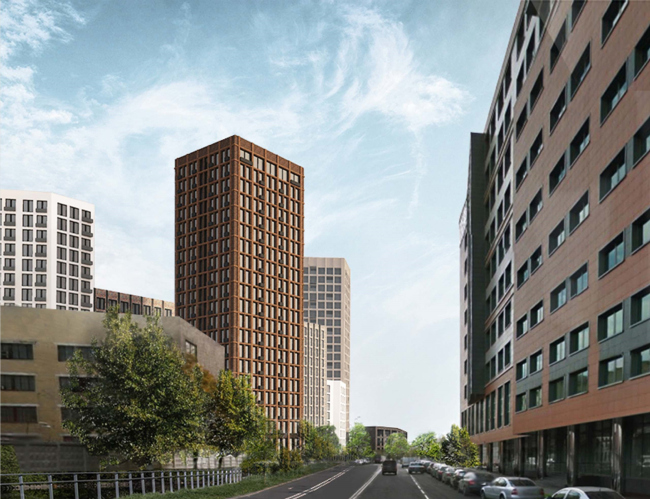
Proposal for building over a land site in the South-East Administrative District of Moscow. Elena Popova, Vera Betretdinova, Olga Mranova. Photo courtesy by the contest organizers
***
Yevgeniy Didorenko, Alexander Shtanyuk
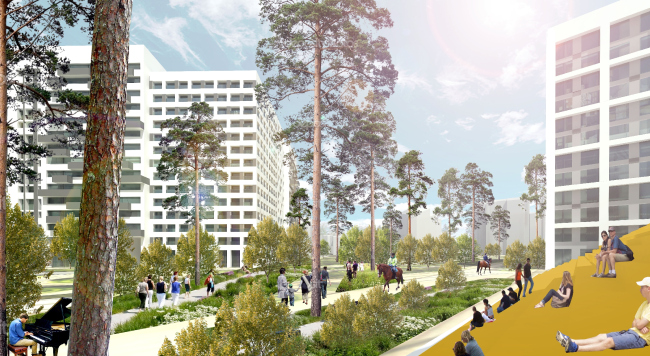
Proposal for building over a land site in the South-East Administrative District of Moscow. Yevgeniy Didorenko, Alexander Shtanyuk. Photo courtesy by the contest organizers
The dwelling and office territories stand separately in this project. The dwelling area is arranged on the side of Krasnokazarmenniy drive and consists of three towers and two blocks encircling yards. Two office buildings – a square one and a rectangular one – are drawn up to Entuziastov highway. Both of them surround a small courtyard.
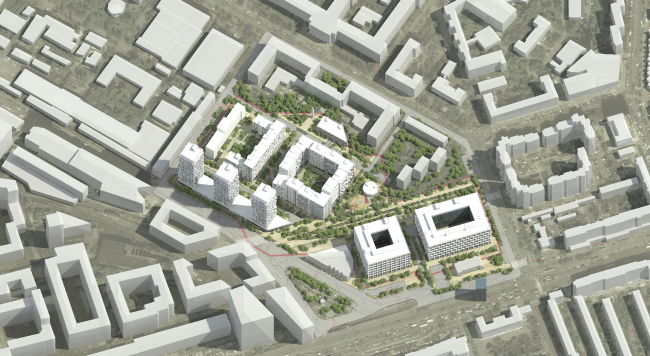
Proposal for building over a land site in the South-East Administrative District of Moscow. Yevgeniy Didorenko, Alexander Shtanyuk. Photo courtesy by the contest organizers
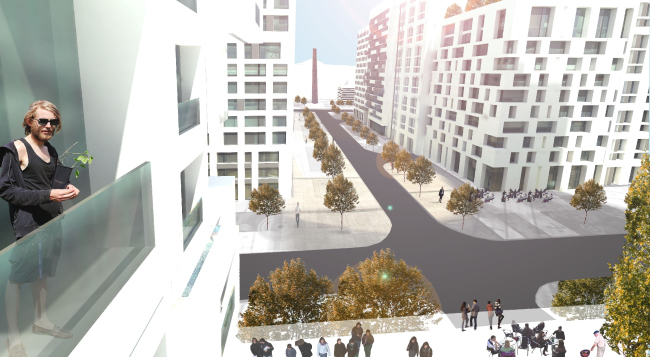
Proposal for building over a land site in the South-East Administrative District of Moscow. Yevgeniy Didorenko, Alexander Shtanyuk. Photo courtesy by the contest organizers
***
Architectural Bureau “4izmerenie”
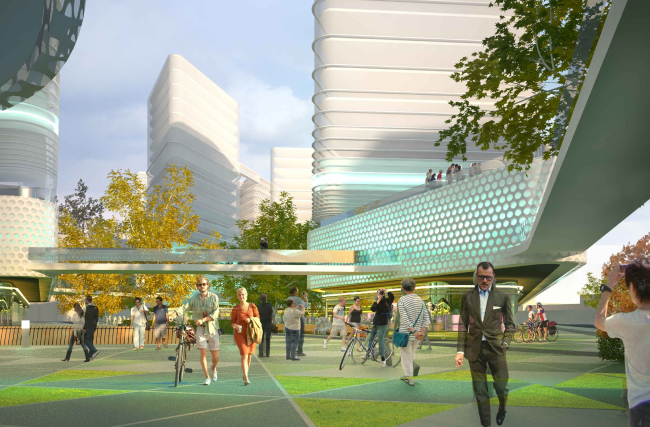
Proposal for building over a land site in the South-East Administrative District of Moscow. “4izmerenie”. Photo courtesy by the contest organizers
The rhombus – a figure that gives countless possibilities at creating ornaments and patterns – is taken as the planning unit in this project. The complex consists of numerous towers with rhombus in plan and rounded corners. The front design develops a theme of simple geometrical figures as squares and circles.

Proposal for building over a land site in the South-East Administrative District of Moscow. “4izmerenie”. Photo courtesy by the contest organizers
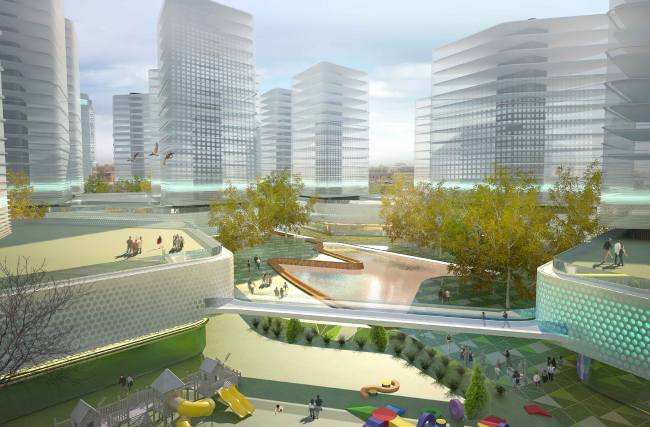
Proposal for building over a land site in the South-East Administrative District of Moscow. “4izmerenie”. Photo courtesy by the contest organizers
The Judging Panel of the Contest:
• Nikolay Shumankov, Head of the Jury, the honored architect of Russia, member of the Russian Academy of Arts, the International Academy of Architecture (Moscow Branch), the president of the Union of Moscow Architects;
• Oleg Kolchenko, Vice President of “MORTON” companies;
• Dmitry Zotov, Director General of LLC “MORTON Development Center”;
• Alexander Bogdanov, Director General of LLC “Regional Center of Urban Geography”;
• Julia Korolyova, Director General of ZAO Control Strategy;
• Andrey Yarushin, Chief of the Department of LLC “MORTON Development Center”;
• Vladimir Yudintsev, laureate of the State Prize of the Russian Federation, professor of MArchI, head of “ARTE+” architectural studio;
• Mikhail Khazanov, professor of MArchI, Vice President of International Academy of Architecture (Moscow Branch), full member of IAA;
• Sergey Gnedovsky, Vice President the Union of Russian Architects, the honored architect of Russia, Corresponding Member of RAACS;
• Mikhail Shubenkov, Vice Chancellor of vocational education development of MArchI.









